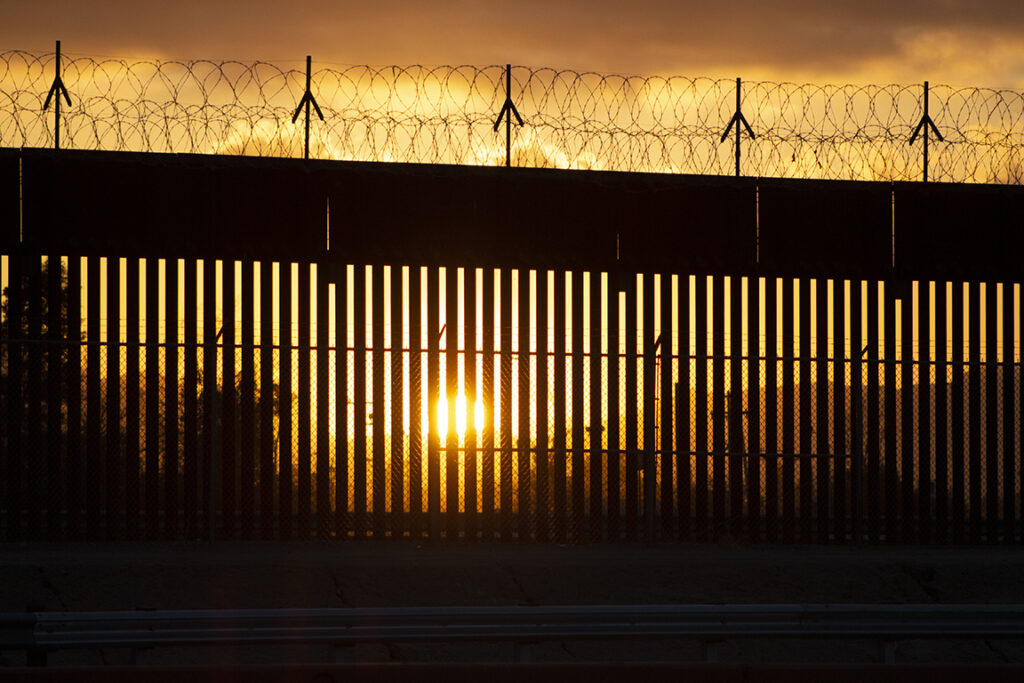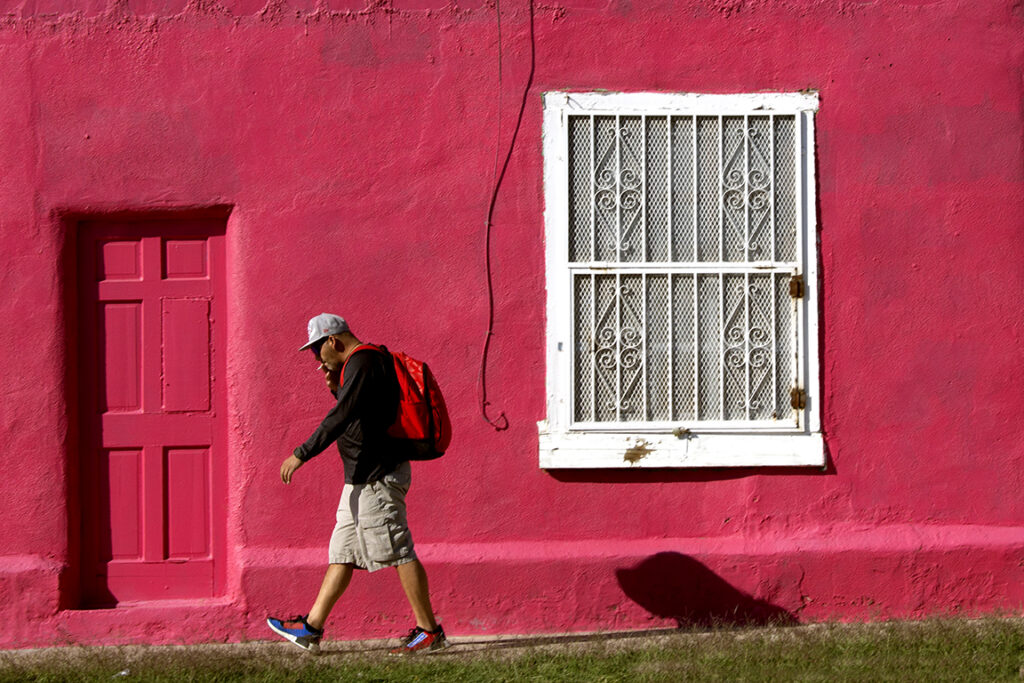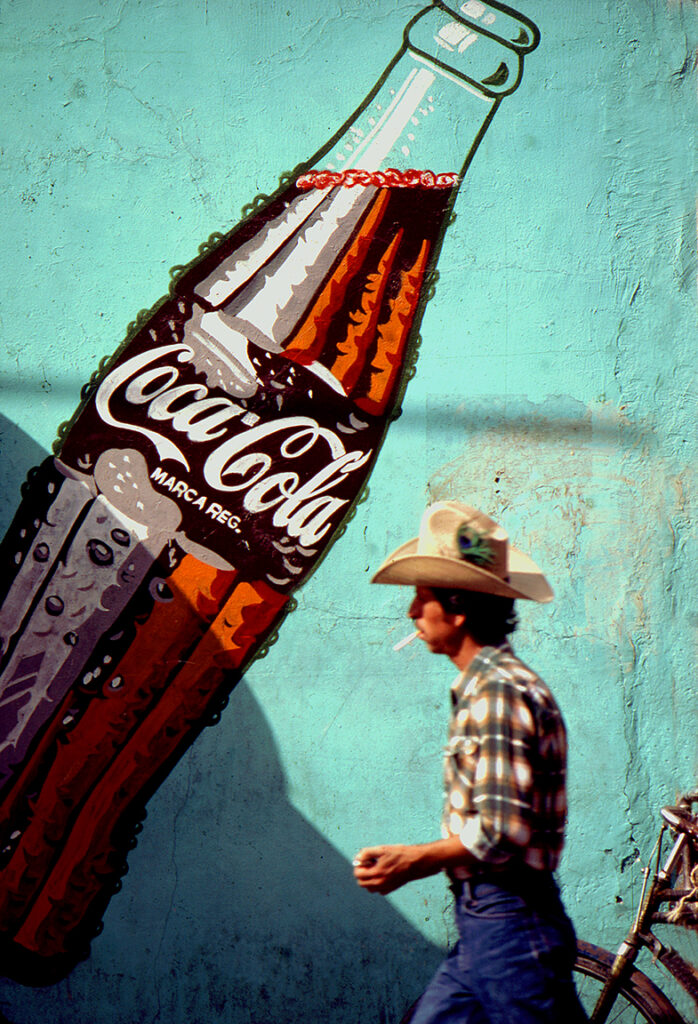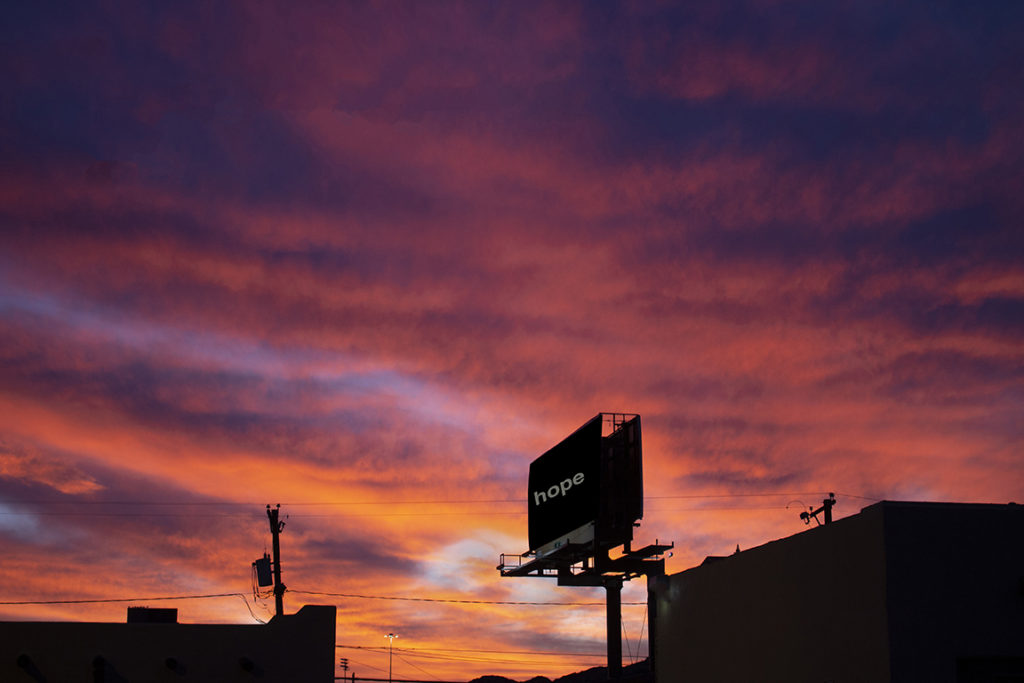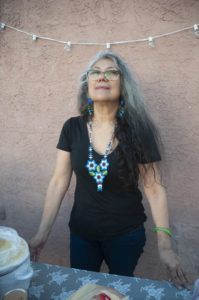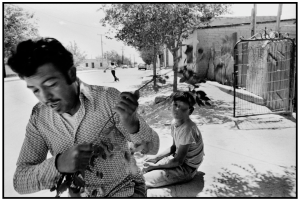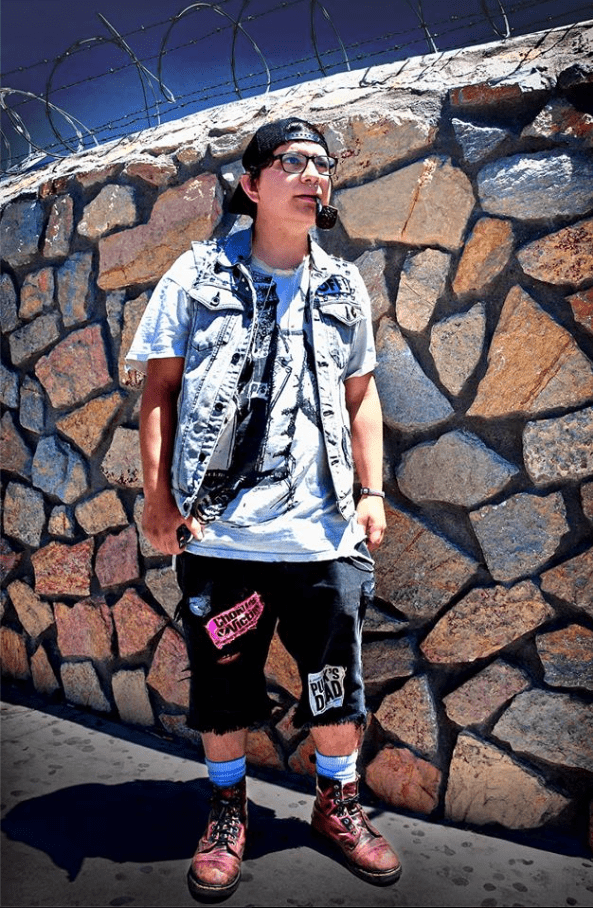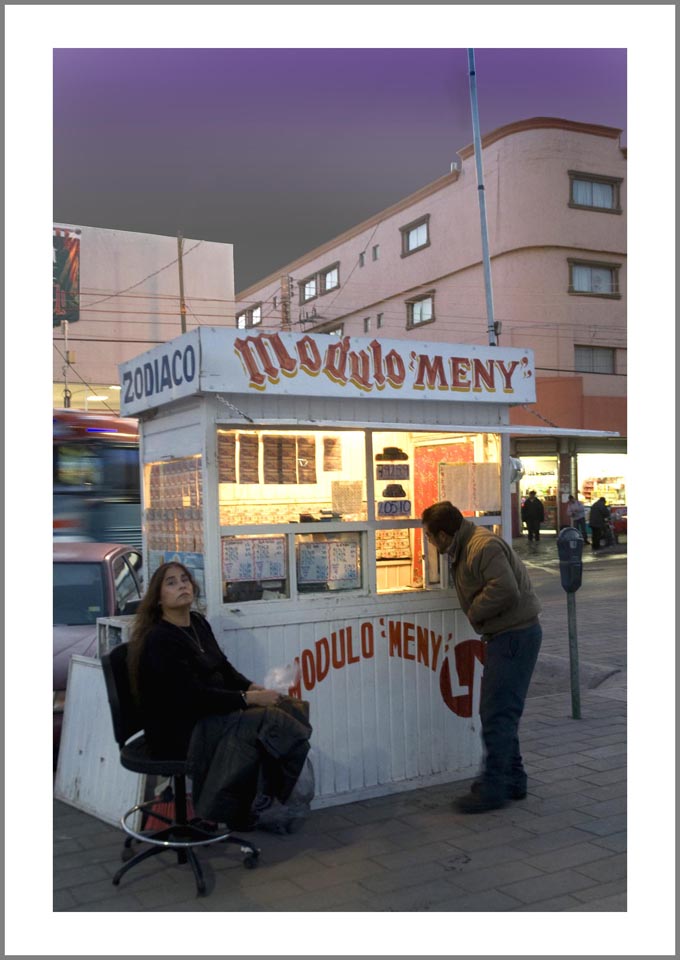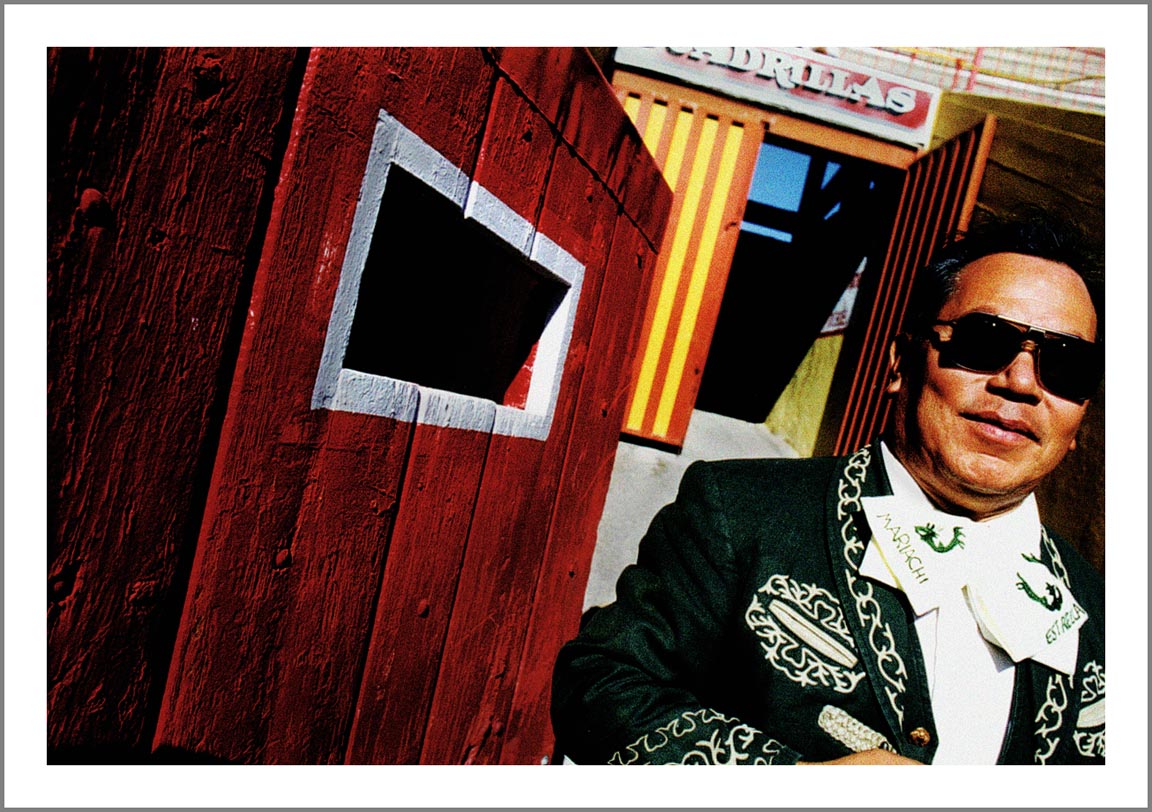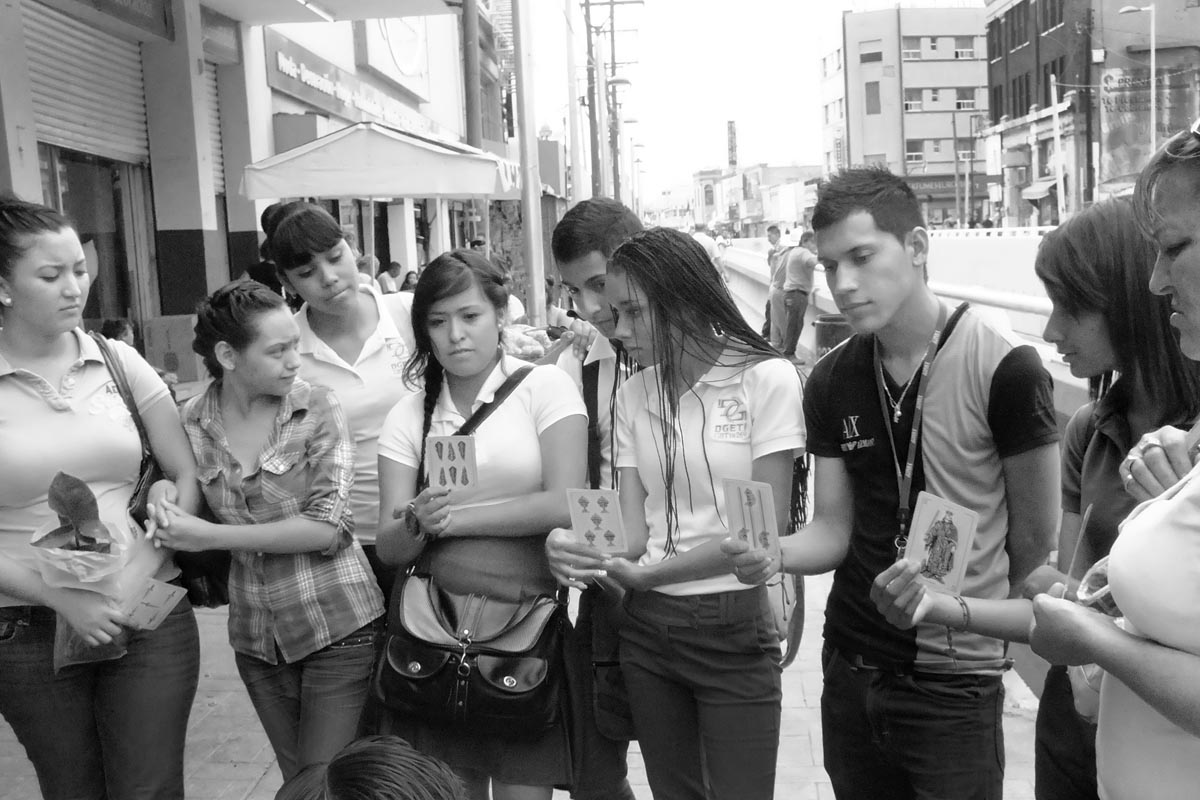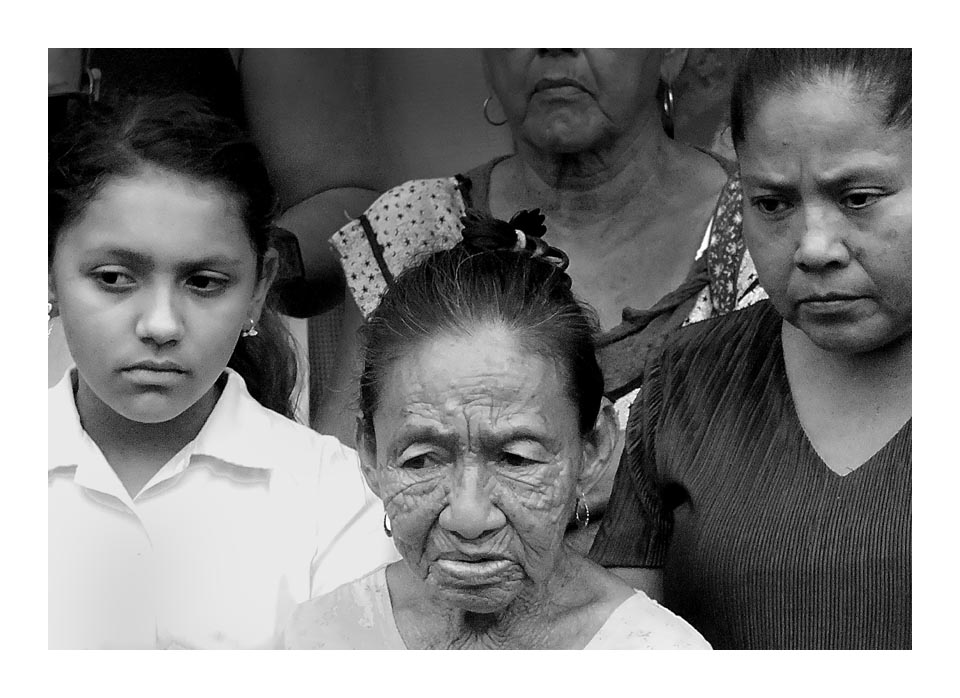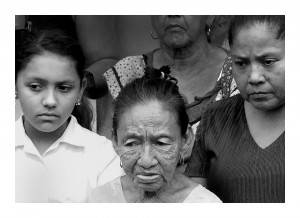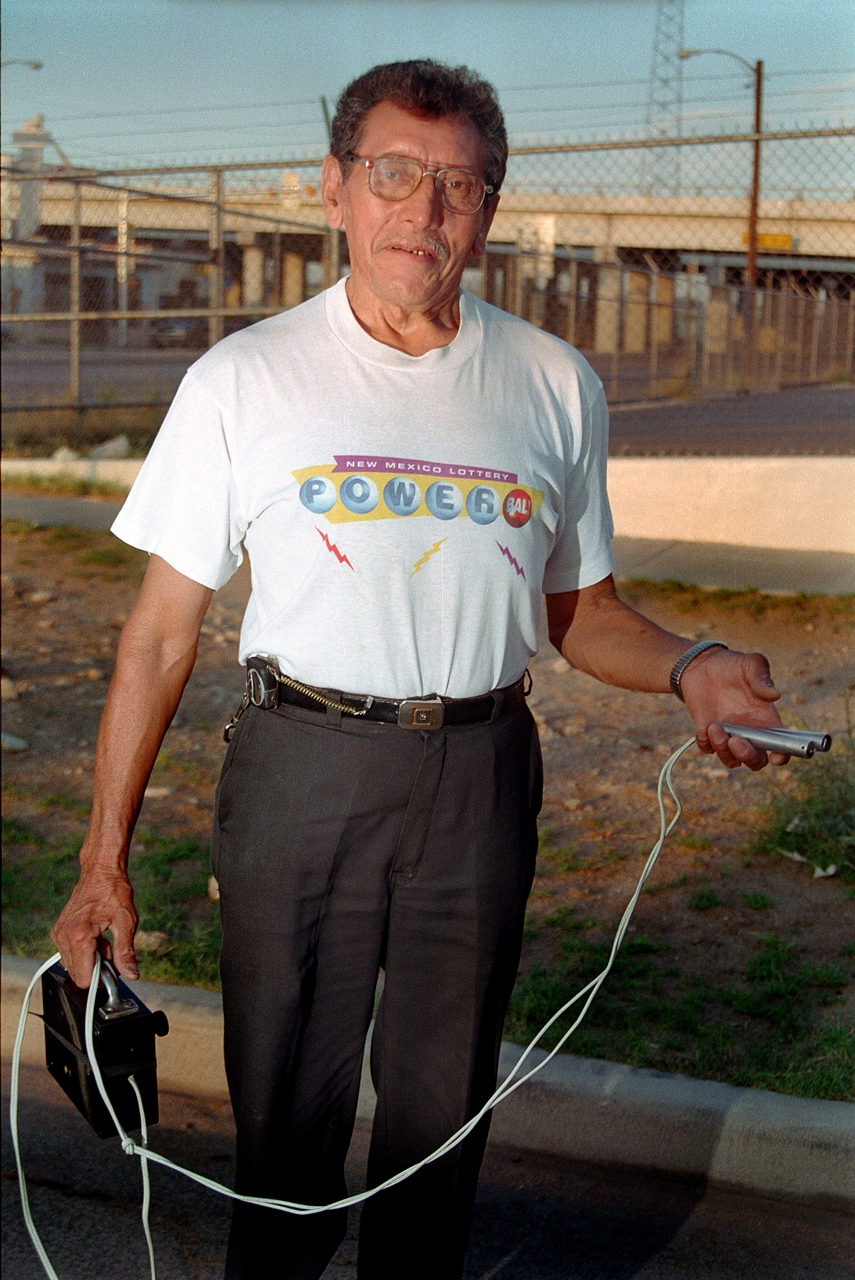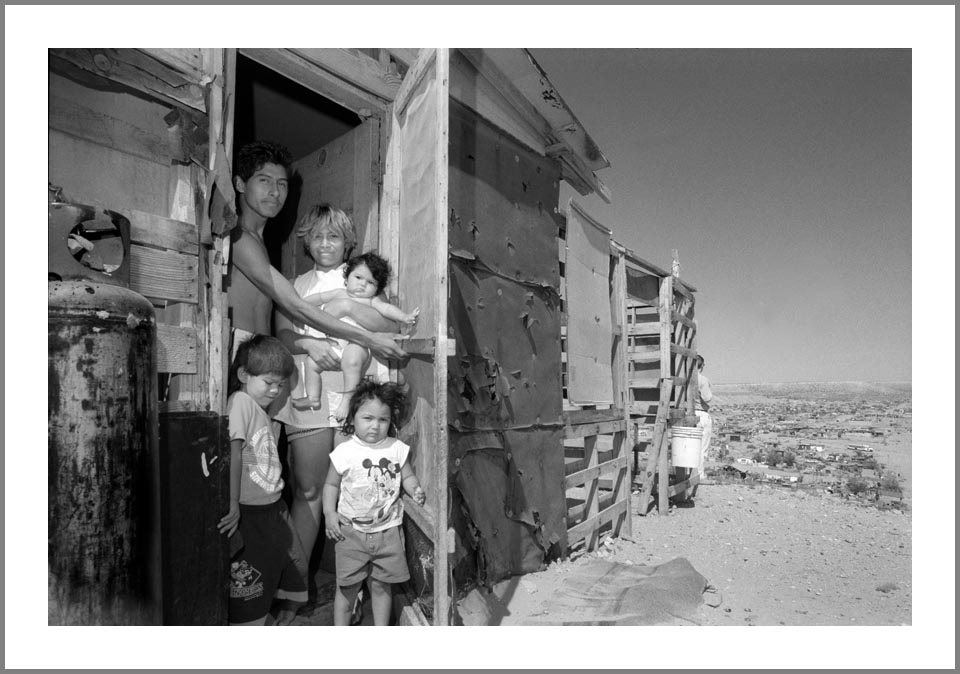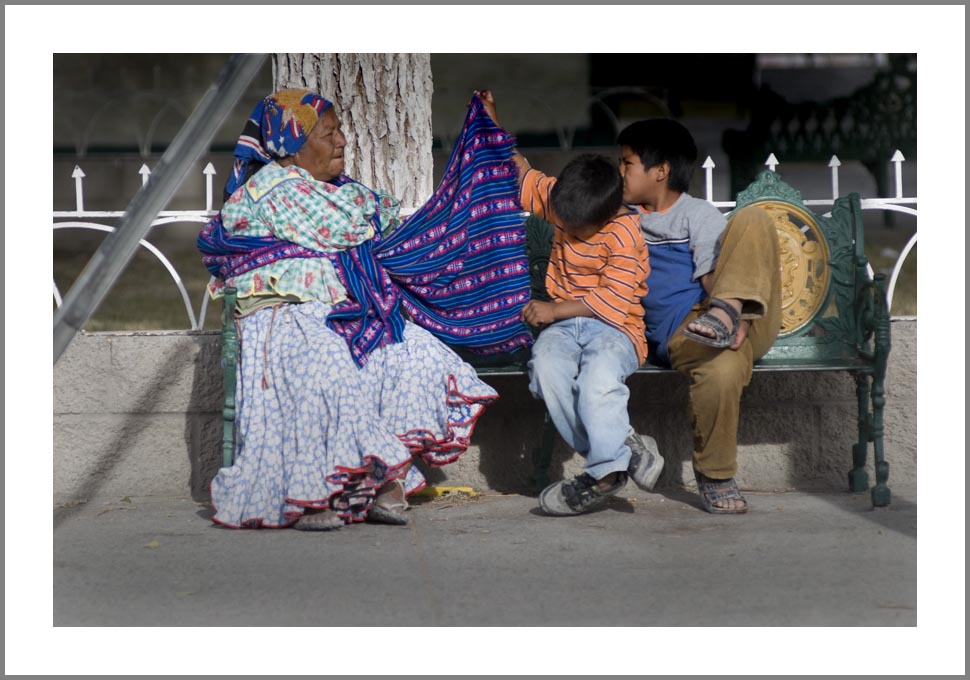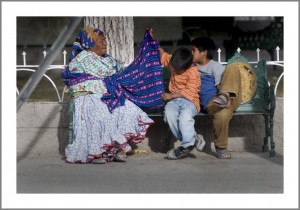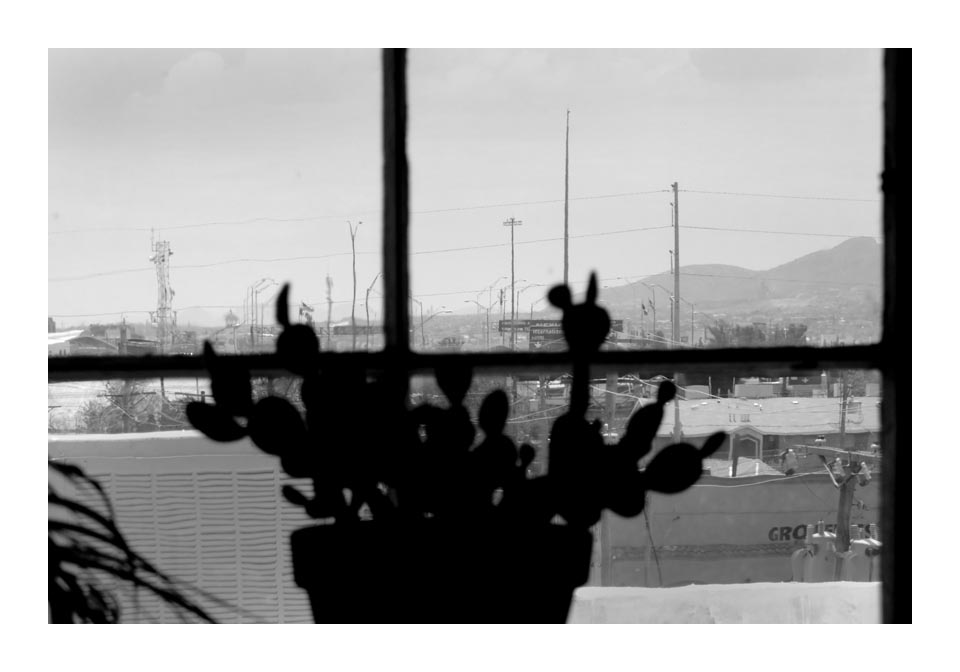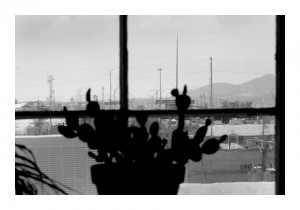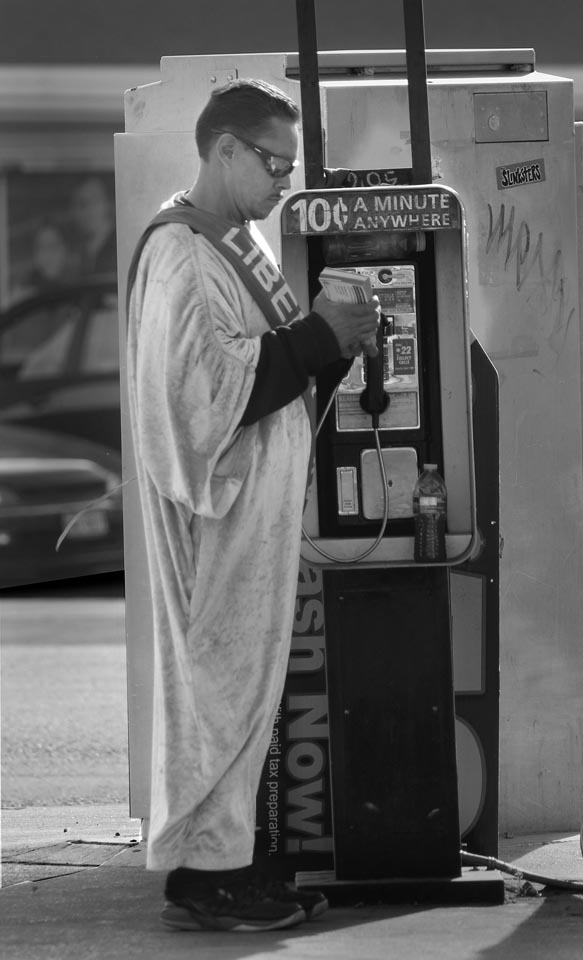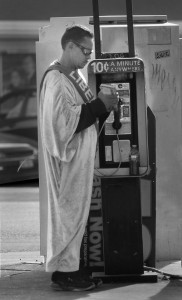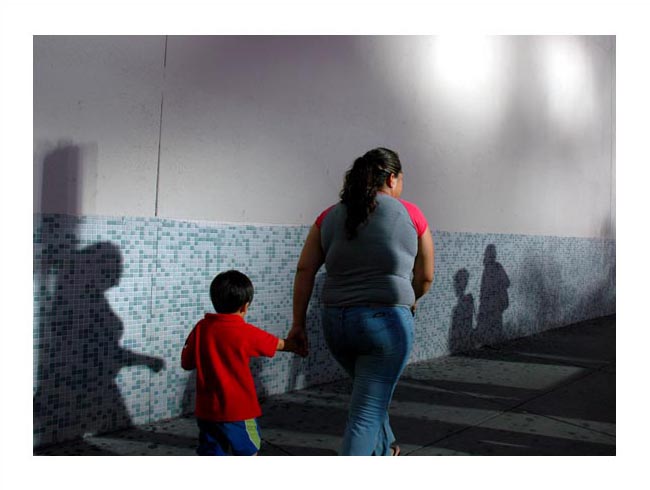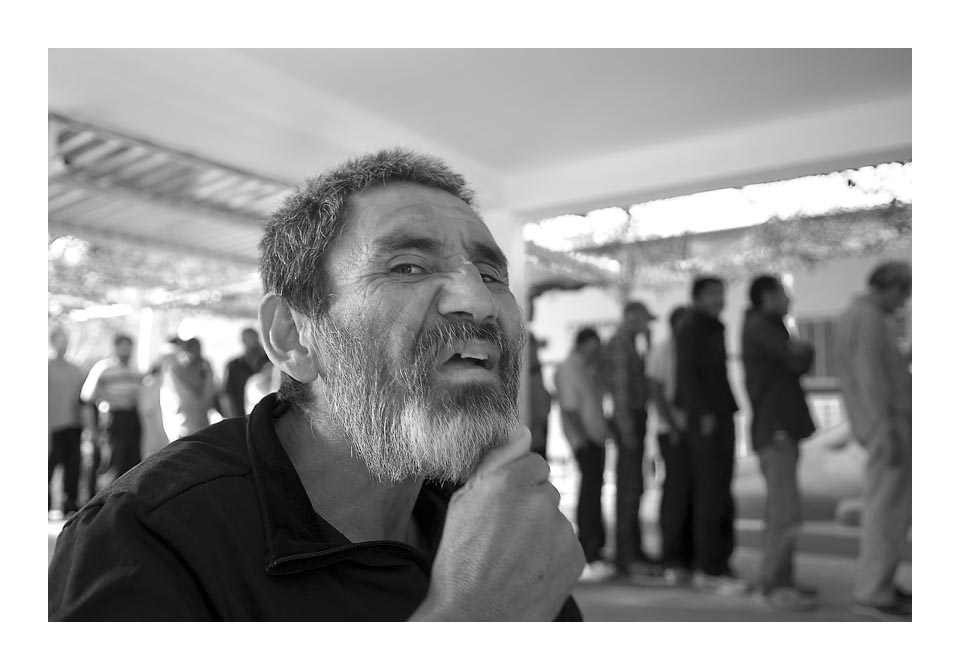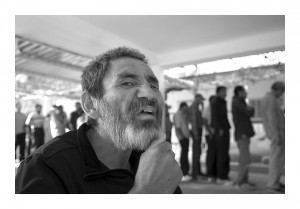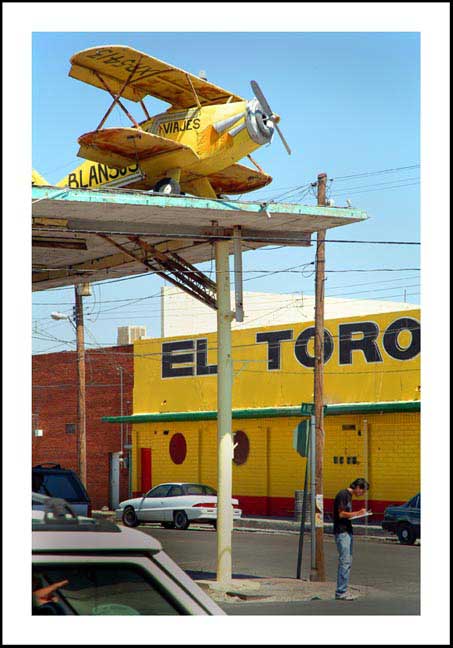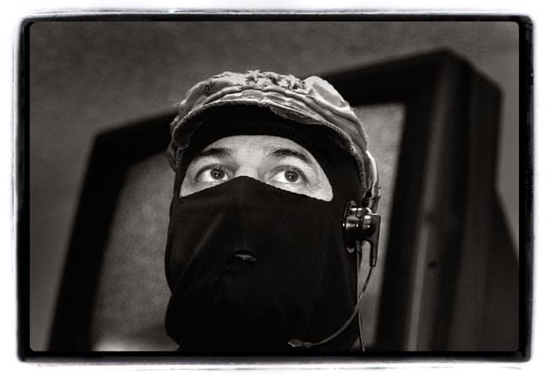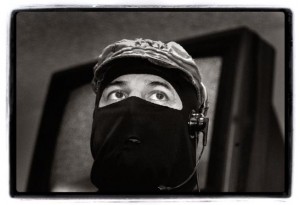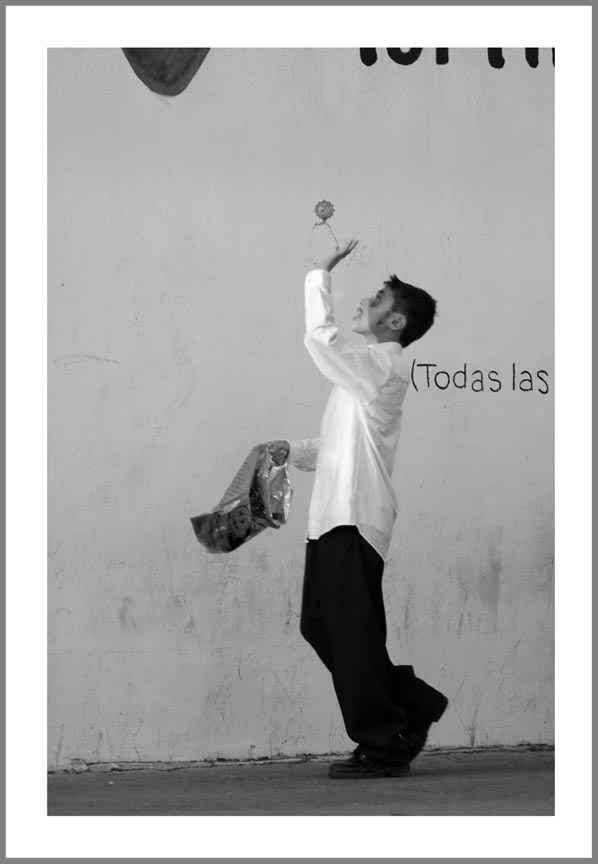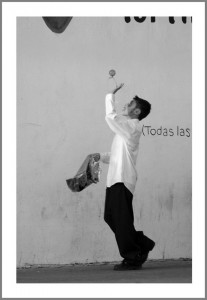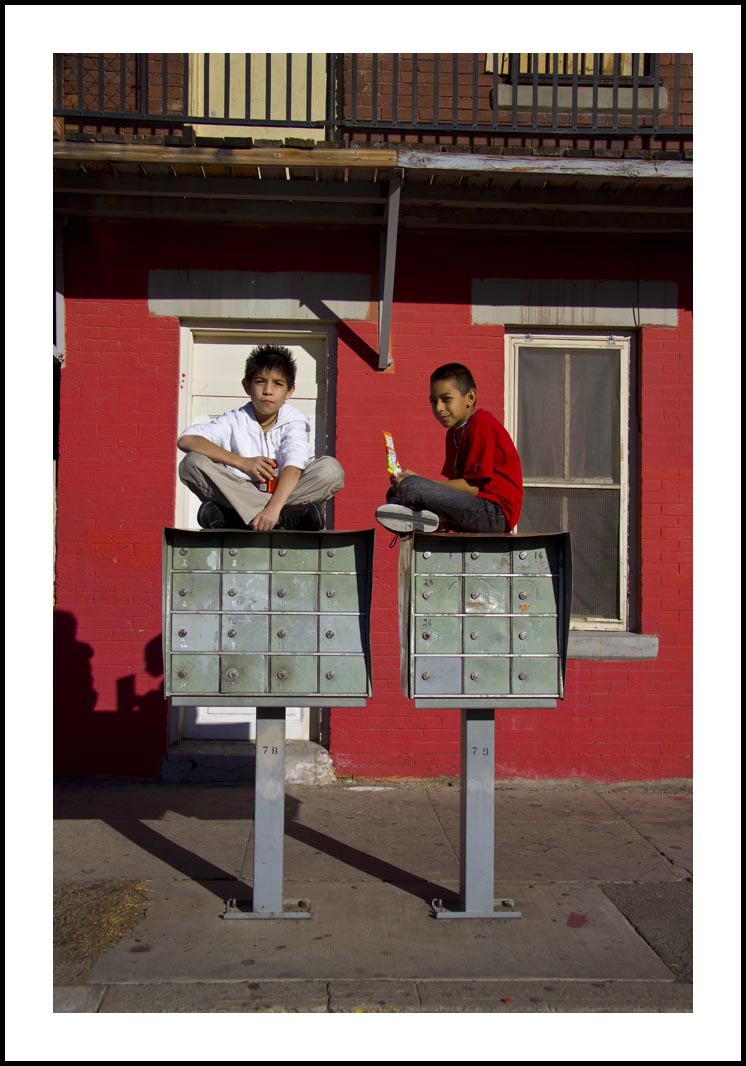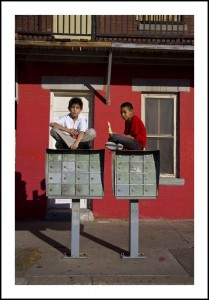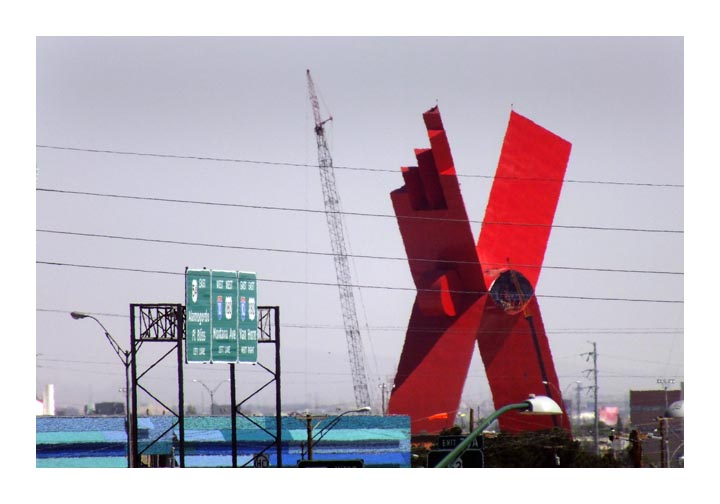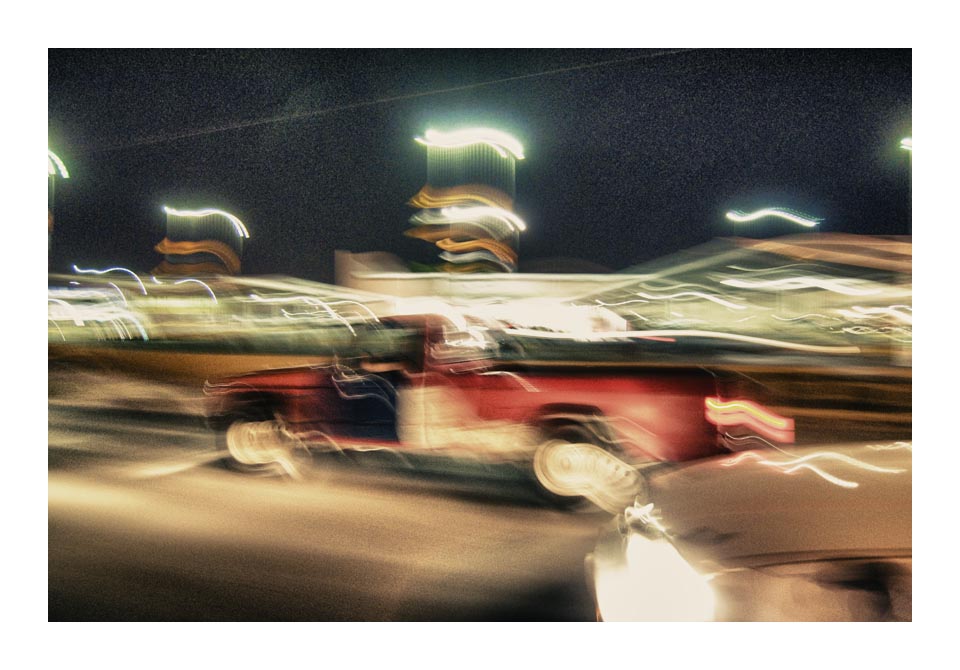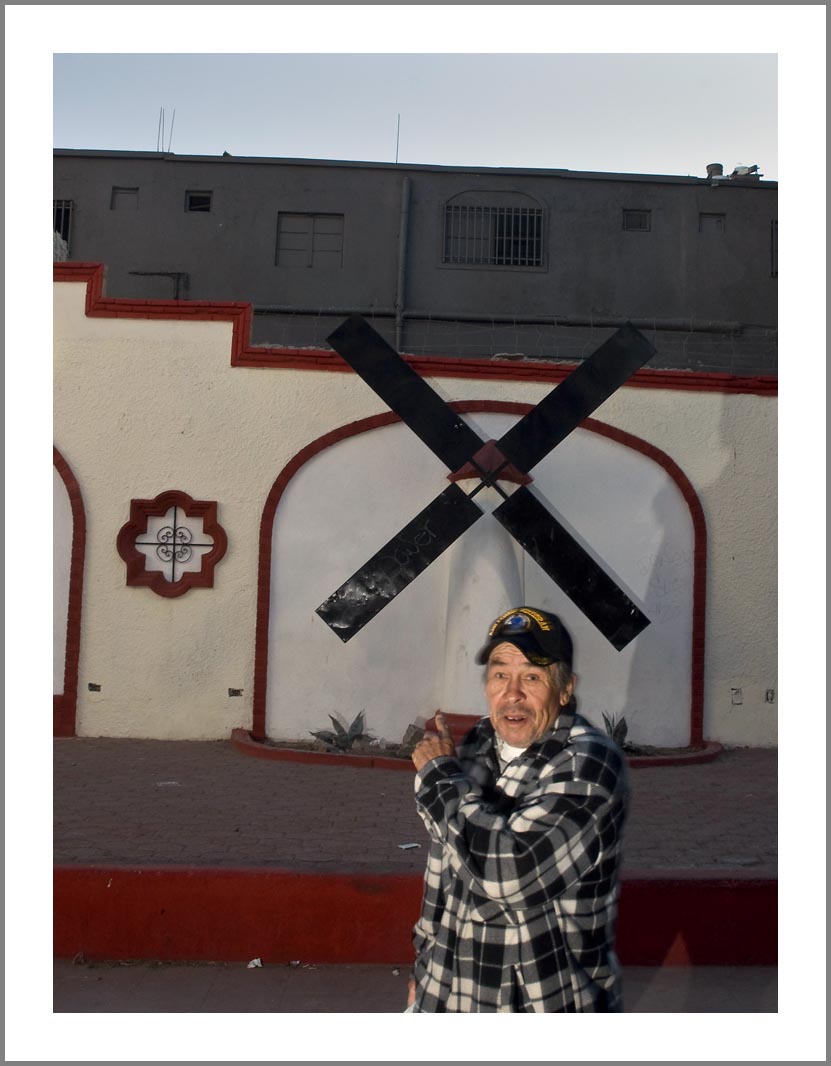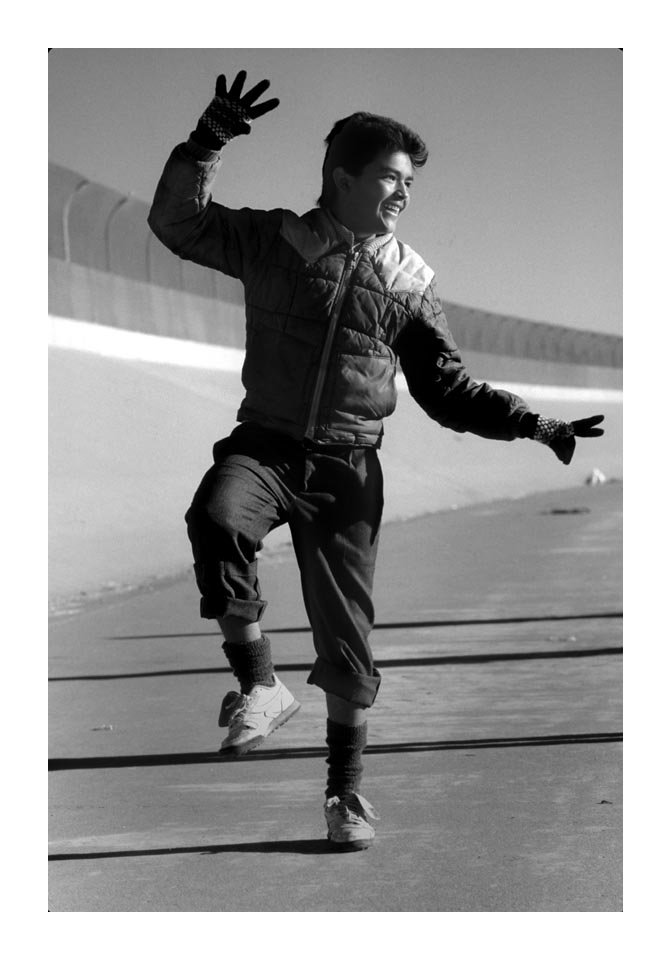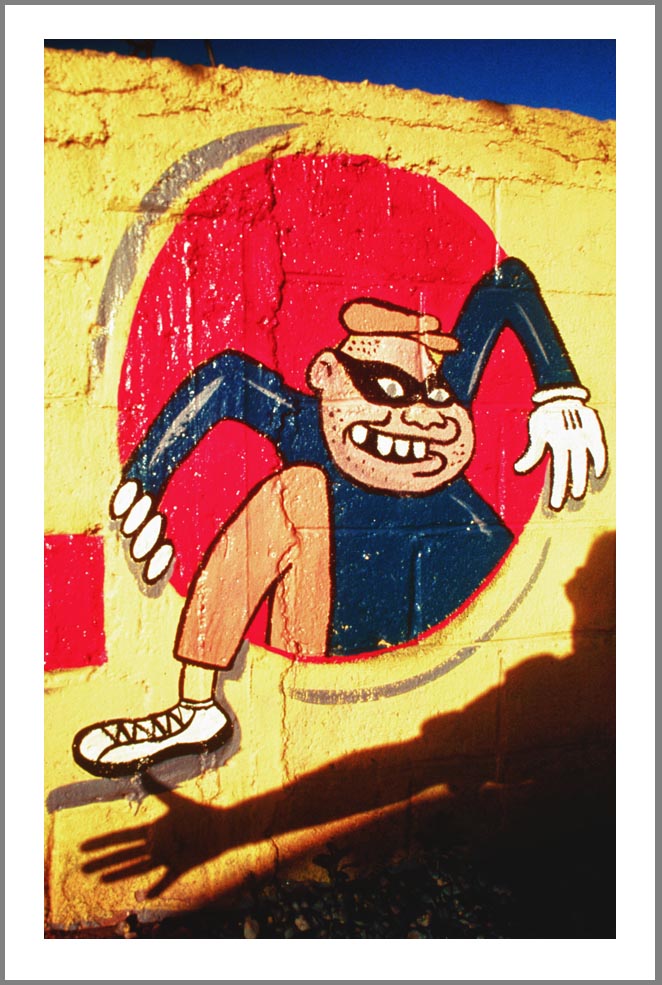Border fence, El Paso, Texas/Juárez, Chihuahua, November 2022 by ©Bruce Berman
REPEAT
HOPE: AN ILLUSTRATION
Hope on the border (Illustration), El Paso-Juárez, 2021
Text/Photography by Bruce Berman
This is not a photograph. It is an “illustration.” It’s a “montage,” a form of photography that goes all the way back to the near beginnings of photography. The distinction between “illustration,” and “photograph,” is that the former is an idea and an opinion and the latter exploits photography’s main strength: believability.
ANOTHER DAY OTRO PESO
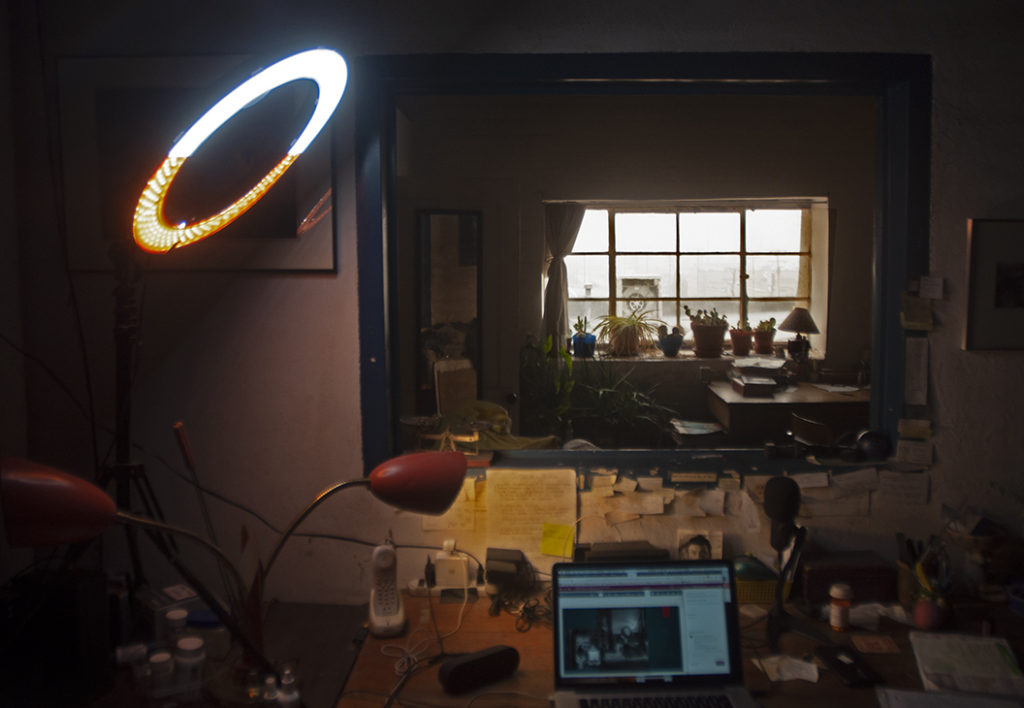
End of a semester. End of an era. My smiling mask of self confidence, of confidence-projecting, of being reassuring has wound down to a needle tip. Sat at this desk for 14 months, rising to the occasion of teaching remotely. Three semesters of little grey rectangles talking with me and me with them.
They rose to the challenge and so have I.
And I’m fried!
SELFA
Dr. Selfa Chew Ph.D.
Visiting Assistant Professor,
Department of History
at University of Texas-El Paso (UTEP)
ALEX WEBB ON THE JUAREZ-EL PASO BORDER
BORDER WOMEN
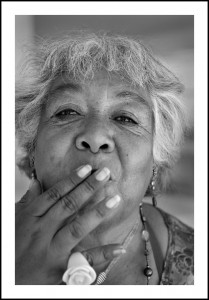
Love them. Always have. Strength. Endurance. Verve. Strongest people on this planet.
UNDEFINED PERSONALITIES AND THE BRIDGE
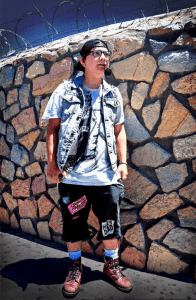
Text and Photo by Bruce Berman
No telling what and who will come over the Cordoba bridge that links El Paso, Texas with its sister city Juárez, Chihuahua.
In this case, crossing from south to north, was Spencer.
Pipe, a hat that said “F___ Off,” aged Doc Marten’s, punk rock labels every where, he is as ecclectic as the border. In a strange way he, is the border: neither this or that, neither Mexican or American, neither barrier nor passageway.
A friend once called the border a metaphor for a person who has “an undefined personality.”
Looking at Spencer -and some others (in my mirror!)- I’m thinking it’s a place for very defined personalities.
The problem is that it’s really difficult to say exactly what they are.
Which brings us back to “undefined.”
The Old New Juarez
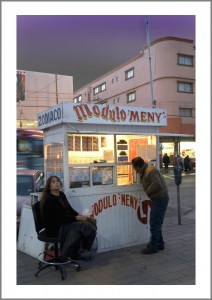
The New Juarez.
Everyone is talking about it. A new day, full of new promise. Many acquaintances tell me about all the new bars and cantinas. That Juarez will rise again.
This morning, Easter morning, two bodies were found hanging from a bridge in central Juarez. The victims were young, scruffy, boys with no names.
Hanging, like crucifixion, is a public and humiliating death. A death after death, the person shamed, rendered helpless, publicly. This is death with a message.
Whiffs: I Can See Tomorrow
Mariachi, Juárez, 2002
There was a day when you could think of Juarez and think in color. I get whiffs of it lately, but one is so cognizant that under that shiny surface is a black and white heart that has been ripped open for all to see and it will take a long time fill with the energy and joy that was -and will be again- the hallmark of Ciudad Juarez. It will happen. It is happening now. A generation has now come that learned to live abajo, and carefully. There has been damage. No one can live under that cloud forever.
It’s nice to look back, now and again. But here, on the border, it has been years since people have allowed themselves to look forward.
There are “whiffs.”
\
Unhappy Crowd With Tarot Cards
The streets of Juárez abound with life again.
The “Cartel War” is over.
The war for justice and integrity in government, the war to develop a country that doesn’t need a drug transporting business as it’s second most important economy (after petroleum), is not over and won’t be for the foreseeable future.
On the streets of Juárez, there is a strange mix: Old people who couldn’t get out, the poor that couldn’t get out, the young that didn’t know there was anywhere to go to and babies!
There are a lot of babies in their teenage parents’ arms these days. In the streets in from of the Mercado Reforma there is this strange blend of young parents weighing babies in their arms, interspersed with the very old, interspersed with prostitutes, interspersed with an economy that is not longer threatened by the incursion of “the franchises.” Franchises bailed out of Juárez years ago, when the war began, in 2011.
This isn’t the Juárez of the glamour 1950s or the boom boom 1960s and their international factories, or of the up and down 1970s and 1980s with the rise of the licenciado middle class, nor of the “we are almost first world” Juárez of the 1990s and beyond.
Three Generations In Juárez
The Shocking Man
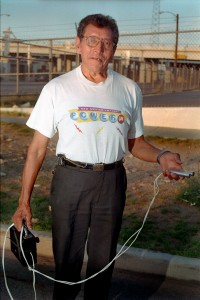
This man shocks people in bars! He takes his battery operated tool around and for five bucks looks for masochists who, drunk (or insane?), pay him to turn up the juice, hit the button and let ‘er rip..
It takes all kinds, no?
Ah Humanity!
And it takes someone to recognize certain kinds of Humanity and let ‘er rip…for…five bucks!
La Familia Hernandez: A Short History Of The Causes Of War
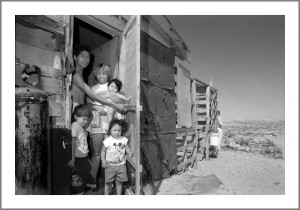
Commentary by the Editor
Juarez, Chih., Mex. — So how did this Cartel War begin and how does it end?
The Border Blog will not answer that today. We look for the things that make the heart tick and leave the fancy thinking to those that make these messes in the first place.
Roughly, for me, it began a long time ago, when the people who have most of the marbles understood that they didn’t have to do a thing about bringing along another class of people who had hardly any marbles at all. Impunity. No apologies. In Juarez the maquila industry began when someone figured out that Labor was a cheap product that Mexico had a lot of and that it could be exchanged for some major profit. Of course nothing so crass as that was said. Rather, this was the bright new day that would lead to a burgeoning “middle class,” and bring everyone up from the bottom. So they said. So the “development” of Juarez began. The powers that be brought willing companies looking for labor and they delivered “labor.” This labor, also known as the citizens of Mexico came from the far flung corners of Mexico. They had nothing else to do and would work at any price, went the theory. Everyone would be happy. You move here, we’ll give you subsistence (and societal dislocation), and we’ll go to the bank. Everyone will be happy.
Right?
When I first started photographing in the maquila factories of Juarez in the early 1980’s the salary in a maquila was $5 per day. Today it’s a little over $7. A full two dollar increase in 20 years. Imagine!
It wasn’t sustainable then and it isn’t now.
The promise of some kind of job, of rising above downright depraved poverty, was strong and people flocked to the border factories. First from Veracruz, then from Durango, then from Torreon and on and on.
If you were a Mexicano and wanted to improve your life without the terrible alternative of actually crossing the border and trying to make it work in El Norte, you headed to the maquilas of Juarez or Tijuana or Nuevo Laredo. If you made that journey you left your culture and customs behind. This was the brave new world.
Bienvenidos campesinos.
Woman and Kids in Juárez
The View South #421
The View South #421, July 2014
Flags are down in Parque Chamizal. Wind must be up and hopefully a little rain. Just a whisper of a season change. Not yet. But not all that far off either. ‘ta bien. The View South. Days come and go. Then years. Then decades. Then…? I turned my back on the past a long time ago. People tell me that’s good. Bible says it too. Do they really mean it?
Man in a Gown
Where’d El Paso Go: Le Foo Foo!
Opinion/Observation
by Co-Editor Bruce Berman
___________________
I drive my old routes. Camera on the passenger seat or my lap. As always, these days it usually stays there, untouched. There are things along the way that spark memories. Object that aren’t there anymore. Gorgeous commercial signs constructed by craftsmen in the 1950s and 60s (not the least of which from the Jimenez Sign Company) were carted off to other cities that were twenty years ahead of El Paso in their bourgeoisie ambitions.You can drink under some of El Paso’s “Motel, Vacancies,” signs in various bars from Austin to Houston to Baton Rouge. There’s a withering away now, aging and weathered, but mostly not endearing anymore, not worth stopping for (to make images). There came a year, a month, a day when the treasures of El Paso were either gone, carted off or just left to rot.
There are whole swaths of this incredible and authentic city that are gone, at least for the long gaze of a photograph: Alameda. El Centro (downtown). Segundo is shrinking fast, bordered by El Paso Street on the west (with nasty tentacles of them all over it) and Cotton on the far east, with old residents living out their days, youth getting out fast and them with their bulging eyes all over it. Off of Delta there are condominiums and some revamped industrial buildings, residents living an almost urban lifestyle (sans humanity). Even the Gay Bars have fled, a sure sign of urban renewal/removal.
It’s not my job to do anything about any of this. My job, as I saw it, at the beginning, in 1980, was to give face to a face that was not known and I have tried. As The Grid lays out its future in the city with two hearts, it’s clear to me that my mission isn’t to pick sides in land rights, power exchanges, or to watch -or judge- the inevitable blandification. But blandification has come. Oh happy day. Some loudly exhale and go, finally! The city is becoming presentable to visitors again. It’s cleaner. It’s newer. There’s baseball. Soccer is coming (watch out Chamizal! The final blow that started in the mid 1960s is finally here). There are restaurants with the preface Le with Foo Fo thing-a-ma-jig dishes with little portions of things that look like they squiggle -vegetables- on top of things it’d be hard to identify below. Fancy. Plates of Foo Foo. There are young people downtown again, well, the kind of young people that look like they’d also be comfortable up in Kern Place on Cincinnati and the upper Westside.
Finally, there’s a Starbucks downtown near the Plaza and the Westin. The kids from the ‘hood can serve the hipsters that come in from outer Zaragosa Road and beyond.
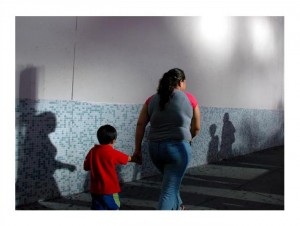
Boring? Not to everyone and I wish them the best. I am not part of this. I left this scene in three other places I lived before this very long stretch here. It’s the same message: you’re in the gentry or you’re equitied out of the gentry.
Man in the House of the Abandoned
El Toro bi-plane, Juárez
El Toro bi-plane on La Avenida, Juárez, 2008
Streets of Juárez are changing.
The murderous last few years are being replaced with growth. Planned growth.
The entire border is under development and there have been plans for decades that are now starting to happen.
It’s as if the violencia was a cleansing. Or was it a scrubbing?
In the “new” Juárez there won’t be any Bi planes. The era is gone. Anything from the 20th Century will become increasingly a rarity.
So be it. C’est la vie. Es la vida. What can one say?
Or was it a
Conscience
Conscience is the root of all true courage; if a man would be brave let him obey his conscience.
– James Freeman Clarke 12/31/2013
Comodante Marcos, Juárez, 2006 ©Bruce Berman
Segundo Barrio Yo Yo Boy
Segundo barrio Yo Yo boy, Halloween 2011
Text by Bruce Berman (in full snide mode)
Halloween is The Great Day in El Segundo barrio. The ‘hood comes alive. People are pouring over the bridges heading from Juarez on the candy quest. People in the neighborhood put on the costumes and come out of invisibility. The first block of America (6th and El Paso) is a riot of laughing and color and wild abandon.
Nothing is sure on this border in this neighborhood anymore. “They” are back! The Developers. “The 180s” aren’t around on this day. The Developers, their Pol puppies, the Gov. employee “Good Germans,” even the The Do Gooders (even if they are really the Do Badders). That’s what I have come to call them all. They say something and if you want to find out what they just said just think 180 degrees opposite from what it was. Most of them are up in Kern Place handing out candy, their yearly contact with the rabble. They’re all afraid of the people when they have fun.
The Fast Disappearing Authentic Segundo Barrio: Mailbox Kids
Mailbox Kids, Segundo Barrio, El Paso, 2012
©Bruce Berman
The Shrinking Segundo Barrio
by Bruce Berman
El Barrio, The Segundo, is shrinking.
It’s getting the squeeze. The squeeze has been coming for a century or more but it’s a full assault now, and a generation that had roots in the ‘hood, that was born of a time and place that demanded they fight, is no longer there in numbers and possibly not there in energy and historic resentment.
The neighborhood is being squeezed from the north with the Dreamland Downtown Plan back on Premium and from within. A proposed Science museum in the old Armijo School would be the death blow.
If the deathblow can be delivered to an already dead corpse.
Light and Shadow and Mom and Child in Between
The X of Juárez
Juárez Night
Man In The Plaza Cervantina
Park Bench: Murder In Plaza Zaragoza
Boy At The River With Two Names
El Bandito de Juarez
El Bandito de Juarez, Juarez, Chihuahua, Mexico – photograph by Bruce Berman©2012

